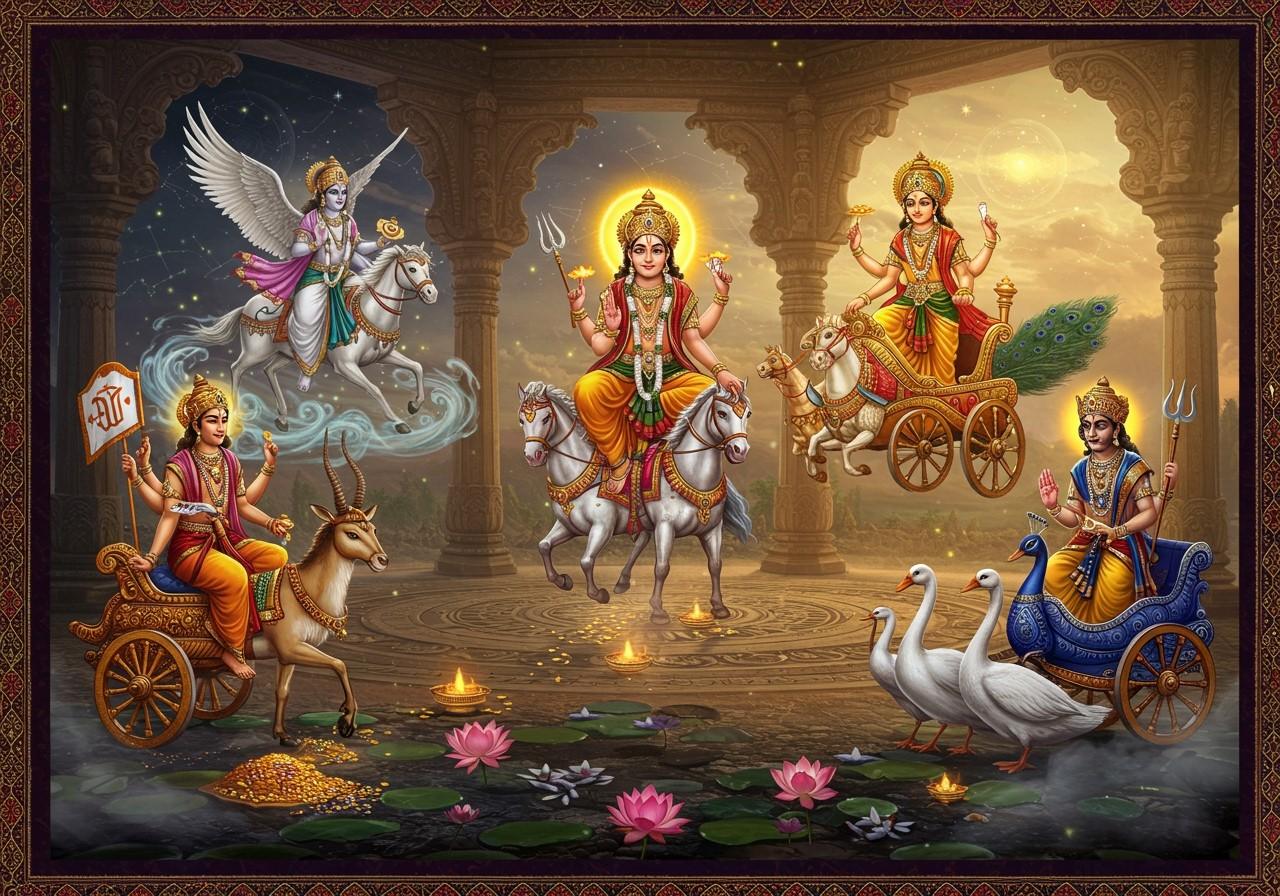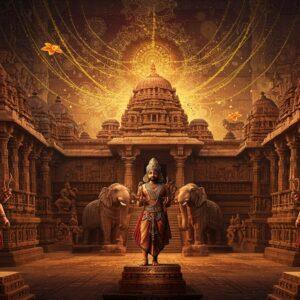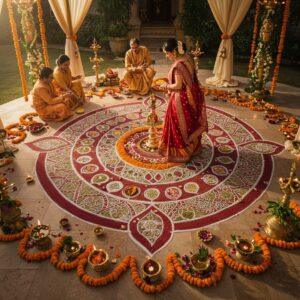
The world of Hindu mythology is vast and captivating, extending far beyond the well-known trinity of Brahma, Vishnu, and Shiva. This rich tapestry of deities encompasses a multitude of lesser-known gods and goddesses, each with unique stories, symbolism, and regional significance. Exploring these lesser-known figures offers a deeper understanding of the diverse beliefs and traditions within Hinduism.
Beyond the Trimurti: Discovering Lesser-Known Hindu Deities
While major deities like Vishnu, Shiva, and Devi are widely recognized, delving into the broader pantheon reveals a fascinating array of lesser-known gods and goddesses. These deities often play crucial roles in local rituals and folklore, adding to the rich tapestry of Hindu beliefs. Discovering these figures provides valuable insights into the diverse expressions of Hinduism across different regions and communities.
Airavata: The Sacred Elephant of Indra
Airavata, the magnificent white elephant, holds a prominent position as the mount of Indra, the king of the gods. More than just a mode of transport, Airavata symbolizes rain, fertility, and royal power. This majestic creature is often depicted with multiple heads and trunks, signifying its divine nature. Learn more about Lord Indra and his sacred elephant at this link and this one.
Exploring the Pantheon: Examples of Lesser-Known Deities
- Alakshmi: The goddess of misfortune, Alakshmi represents the opposite of Lakshmi, the goddess of prosperity. Often depicted as disheveled and riding a donkey, Alakshmi reminds us of the duality of life and the importance of balancing both fortune and misfortune. It is believed that acknowledging Alakshmi can help avert negative energies.
- Chinnamasta: This fierce goddess is recognized for her self-decapitation, holding her own severed head and drinking the blood spurting from her neck. Chinnamasta embodies self-sacrifice and the cycle of creation and destruction, representing a powerful symbol of transformation and liberation. This complex imagery invites deeper reflection on life, death, and renewal.
- Manasa Devi: The serpent goddess Manasa is revered for her power over snakes and her association with fertility and wish fulfillment. Often depicted adorned with serpents and seated on a lotus or a snake, Manasa highlights the intertwined relationship between humans and the natural world. Her worship is particularly prevalent in Bengal and other parts of eastern India. Find idols, pictures and other offerings at poojn.in. Buy now.
- Dhanvantri: Considered the god of medicine and an incarnation of Vishnu, Dhanvantri is credited with bringing Ayurveda to humanity. He is typically depicted holding a pot of amrita, the elixir of immortality, and symbolizes healing and well-being. Dhanvantri is revered by those seeking physical and spiritual health.
Regional Variations and Cultural Significance
Many lesser-known deities hold particular significance within specific regions or communities. Mariamman, for instance, is a popular village goddess in South India, associated with rain, healing, and protection from diseases. These regional variations in worship reflect the diverse tapestry of Hindu traditions. Karni Mata, revered in Rajasthan as the “Rat God,” exemplifies the unique cultural practices associated with certain deities.
The Interplay of Nature and Divinity
Hinduism emphasizes the interconnectedness of nature and divinity. Deities like Vayu (wind), Surya (sun), and Varuna (water) represent the forces of nature and are worshipped for their life-sustaining roles. These deities underscore the importance of respecting and living in harmony with the natural world.
Poojn.in: Your Resource for Connecting with Hindu Deities
Poojn.in offers a wide selection of products to support your devotion to all Hindu deities, including the lesser-known ones. Explore our extensive collection of puja items, idols, religious texts, and more to enhance your spiritual practice.
- Puja Samagri: Find complete puja kits and individual items like incense, dhoop, and offerings.
- Idols and Murtis: Discover beautifully crafted idols of various deities, including those less commonly found.
- Religious Texts: Explore a range of scriptures and guides to deepen your understanding of Hindu mythology.
Visit Poojn.in today to discover everything you need for your spiritual journey.
FAQs on Lesser-Known Hindu Deities
What are some good resources for learning more about these deities? Books on Hindu mythology, online encyclopedias, and scholarly articles can provide detailed information about lesser-known Hindu gods and goddesses. How are lesser-known deities incorporated into daily worship? While not always part of daily rituals, many lesser-known deities are honored during specific festivals or regional celebrations. Some individuals may also have personal devotions to these deities. Where can I find information about specific rituals or offerings for these deities? Consulting with religious scholars, priests, or local communities who traditionally worship these deities can provide insights into specific rituals and offerings.


